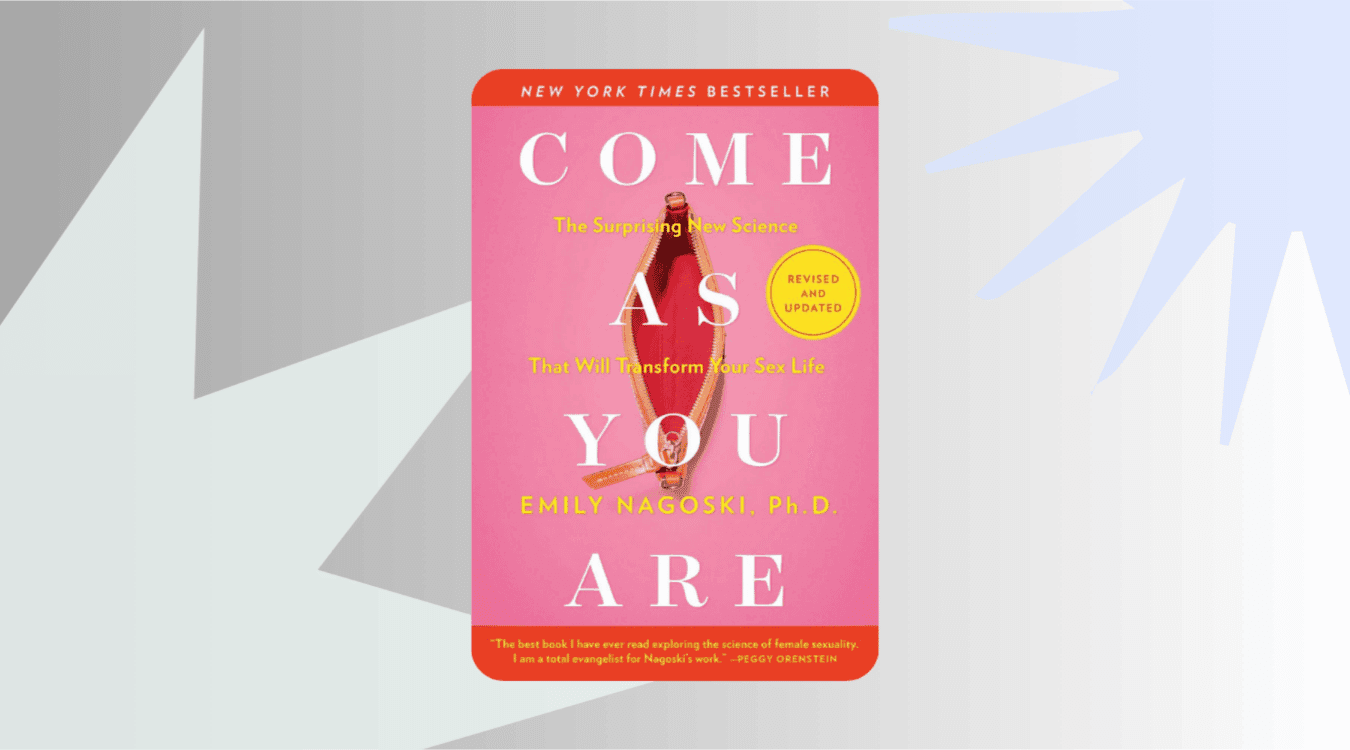Since its release, Come As You Are by Emily Nagoski has become one of the most widely discussed and recommended books on women’s sexual wellbeing. It has maintained high ratings on major platforms, earned praise from therapists, educators, and medical professionals, and gained a loyal following among readers who value science-based, compassionate approaches to sexuality. The book has been embraced in book clubs, college classrooms, and mental-health communities, and continues to be referenced in conversations about modern sex education and relationship wellness.
Its popularity stems not only from its evidence-based insight, but from its tone — reassuring, practical, and deeply human. Many readers describe it as a transformative or eye-opening read that helped them rethink long-held beliefs about desire, intimacy, and self-acceptance. In a landscape often crowded with advice and performance-focused narratives, Come As You Are stands out for offering understanding, context, and empathy — and for giving readers permission to feel normal in their own sexual experience.
Come As You Are: Book Summary and Key Concepts
Come As You Are is a research-based guide to female sexuality that explains how desire, arousal, and sexual satisfaction are shaped not only by biology but by emotion, environment, and the nervous system. Emily Nagoski’s central message is that there is no single “normal” sexual experience, and women’s sexuality cannot be understood through simple stereotypes or cultural expectations. Instead, sexual response is deeply tied to context, safety, mental state, and stress levels.
The book blends neuroscience and psychology to dismantle shame and misunderstandings around female desire. Nagoski encourages readers to approach their bodies with curiosity and compassion rather than judgment or pressure, reframing sexuality as a natural, adaptable, and individually unique process rather than a performance or fixed trait.
The Dual-Control Model
One of the book’s core ideas is the dual-control model of sexual response, which describes the brain as having both accelerators and brakes. Accelerators are stimuli and experiences that increase sexual interest or arousal, while brakes are internal or external factors that suppress desire. These brakes may include stress, self-criticism, fear, insecurity, trauma, pressure, or feeling disconnected.
Nagoski emphasizes that sexual difficulties often come from overly active brakes rather than weak accelerators. Understanding one’s personal accelerators and brakes helps individuals and couples create environments that support relaxed, responsive, confident intimacy.
Two Forms of Desire: Spontaneous and Responsive
The book highlights the distinction between spontaneous desire and responsive desire. Spontaneous desire appears suddenly and feels instinctive, while responsive desire develops gradually, often once physical or emotional intimacy is already underway.
Nagoski explains that responsive desire is extremely common, especially in long-term relationships, yet many women assume something is wrong if they do not feel spontaneous, immediate sexual interest. Recognizing responsive desire as normal and healthy relieves pressure and allows sexuality to unfold naturally.
The Power of Context
Context plays a crucial role in female sexual response. Emotional connection, trust, privacy, relaxation, mental state, and life circumstances shape arousal as much as physical stimulation does. When a person feels safe, supported, confident, and comfortable, the mind and body are more able to engage in sexual pleasure. Conversely, stress, fatigue, conflict, pressure, and anxiety can completely shut down desire.
Nagoski encourages readers to see sexual desire as a reflection of overall emotional and physical environment rather than a standalone trait.
Stress, the Nervous System, and Sexual Well-Being
A major theme in the book is the connection between stress and sexual response. The body’s stress response suppresses arousal and makes it difficult to access pleasure. Nagoski explains that managing stress, building emotional safety, and fostering relaxation are essential parts of sexual well-being. Sexuality thrives not under pressure or urgency, but in states of ease and calm.
She invites readers to recognize stress relief, rest, and emotional safety as legitimate components of sexual health, not indulgences.
Body Image, Cultural Messaging, and Self-Acceptance
The book also explores how cultural expectations, internalized shame, and body image affect sexuality. Many women learn to judge or police their bodies, leading to anxiety and reduced pleasure. Nagoski challenges harmful cultural messages about “ideal” desire and “ideal” bodies, urging readers to adopt self-compassion and reject perfectionism.
Confidence, comfort, and self-kindness, she argues, enhance intimacy far more than striving to meet unrealistic standards.
A New Approach to Pleasure
Ultimately, Come As You Are reframes sexuality as a process rooted in emotional safety, nervous-system balance, and personal context rather than performance or comparison. The book encourages readers to move away from measuring sexual self-worth by frequency, intensity, or spontaneous desire, and instead to embrace pleasure, curiosity, and connection.
Sexual well-being is not about forcing arousal or meeting an external standard; it is about understanding one’s body and responding to it with patience, awareness, and kindness.
Review: Come As You Are
Come As You Are has earned its reputation as a landmark book in modern sexual-wellness literature — and for good reason. Emily Nagoski brings together neuroscience, psychology, trauma-informed insight, and cultural critique to explain why women experience desire and arousal the way they do. The book dismantles the idea of “sexual normalcy” and replaces it with something far more useful: individual context, nervous-system health, emotional safety, and self-understanding.
At its core, this book argues that desire is not a fixed biological dial — it’s a context-dependent, stress-sensitive system, and cultural misinformation often creates shame where curiosity and compassion should exist. Nagoski’s approachable writing style and emphasis on emotional safety resonate deeply with readers who’ve been taught unrealistic ideas about sex, specifically women who have internalized pressure to perform, feel desire spontaneously, or “match” a partner’s libido.
Perhaps the strongest contribution is the dual-control model — the idea that sexuality is shaped by both “accelerators” and “brakes” in the brain. This framework alone has helped countless readers understand sexual patterns that once felt confusing or “broken.”
The book blends relatable metaphors, scientific explanations, and supportive psychological guidance. For many, it feels less like reading a sex manual and more like finally hearing the truth about how women’s bodies and brains function — without shame, fear, or comparison.
Strengths — What Readers Applaud
Insightful & grounded in science
Readers appreciate that the book takes female sexuality seriously — not as fantasy or entertainment, but as neuroscience + psychology + sociology. It places sexual wellbeing in the same category as mental health: complex, personal, and influenced by environment and stress.
Emotionally validating and shame-reducing
One of the most common reactions is relief.
Many readers describe the book as freeing — particularly those who thought they had “low libido” or felt defective due to cultural myths. Nagoski normalizes responsive desire, fluctuations depending on life phase, and stress-related sexual shutdown.
Improves intimacy & communication
Couples often report that this book helps them talk openly about boundaries, pacing, safety, triggers, and desire patterns — without blame. It is frequently recommended by therapists for couples or individuals processing shame or anxiety around intimacy.
Accessible and friendly tone
The conversational writing style makes complex biological concepts feel clear and manageable, even for readers with no scientific background.
Limitations — What Some Readers Critique
Repetitive tone
While many find the supportive voice comforting, others feel the repeated “you’re normal, it’s okay” message becomes redundant — especially if they already have a secure sense of sexual identity.
Science can feel simplified
Some reviewers note that certain studies are presented at a high level and the science, while valid, isn’t always deeply explored. Academic readers sometimes want more citations, data, and nuance.
Not fully inclusive
The book is primarily centered on cisgender female experience. While it includes mentions of diverse identities, readers in LGBTQ+ and asexual communities sometimes wish the representation and depth were greater.
Not a “skills and techniques” guide
Readers looking for detailed physical techniques, explicit sexual guidance, or step-by-step intimacy exercises may feel the focus leans heavily toward education, emotion, and stress science rather than direct instruction.
Pros & Cons Summary
| Pros | Cons |
|---|---|
| Warm, supportive, non-judgmental tone | Repetition can feel heavy-handed |
| Grounded in psychology & neuroscience | Limited practical techniques |
| Breakthrough concepts like dual-control model | Science sometimes simplified |
| Reduces shame & normalizes variation | Not fully inclusive for all identities |
| Helps couples communicate better | May feel basic for high-knowledge readers |
| Validates stress + context as key | Targeted mostly to cis women |
Final Verdict
Come As You Are is a foundational book for anyone trying to understand female sexual response beyond myths and stereotypes. It excels as a mindset-shifting, empathy-building, shame-free guide — particularly for readers who’ve battled self-criticism, cultural pressure, or confusion around desire and arousal.
If you want a research-based, psychologically grounded explanation of female sexuality that centers emotional safety and nervous-system health, this book is incredibly valuable.
If you’re looking for explicit techniques, erotica, or a manual of sexual positions, this is not that book — and it never tries to be.
Overall:
A compassionate, empowering, and frequently transformative resource — perfect for individuals, couples, and book clubs who value emotional intelligence and science-based understanding over sensationalism or performative sexuality.
FAQs
Is Come As You Are worth reading?
Yes. Come As You Are is widely considered one of the most insightful and accessible books on female sexuality, desire, and sexual wellbeing. It combines science with practical psychology in a way that helps readers understand their bodies and experiences without shame. If you’re interested in sexuality, relationships, emotional health, or personal development, it’s a valuable and empowering read.
Should I read Come As You Are before Come Together?
If you plan to read both, yes — it’s helpful to read Come As You Are first.
Come Together functions as a practical workbook and applies the concepts introduced in Come As You Are. Starting with the main book gives you the foundational understanding, and the workbook then builds on those ideas with exercises and guided reflection.
Is Come As You Are research-based?
Yes. The book is grounded in scientific research from psychology, neuroscience, and sexual health studies. While the tone is friendly and accessible rather than academic, the core concepts — particularly the dual-control model and the role of context and stress — come directly from established research in sexual science.
What is the central message of the book?
The central message is that women’s sexual desire and arousal are deeply influenced by context, emotional safety, stress levels, and individual variation — and there is no “normal” sexual experience to compare yourself to. Understanding your brain and body, rather than judging them, leads to healthier, happier sexuality.
Is Come As You Are good for couples?
Yes. Many couples find it extremely helpful. The book encourages open communication, reduces pressure, and helps partners understand each other’s sexual responses and needs. It is especially valuable for couples navigating mismatched desire, stress-related intimacy changes, or misunderstandings about how arousal develops.

